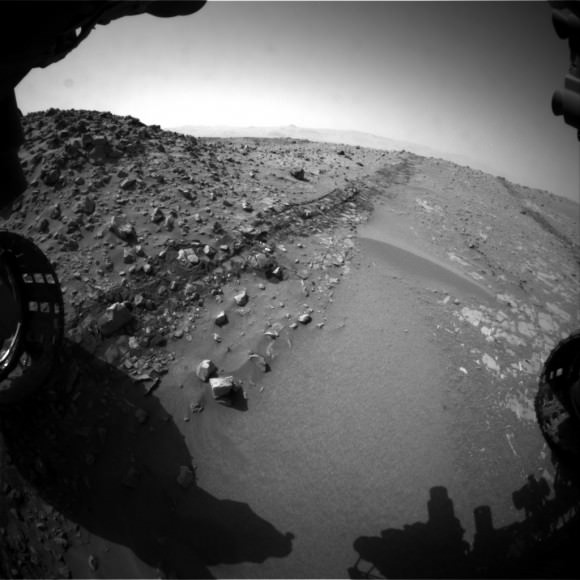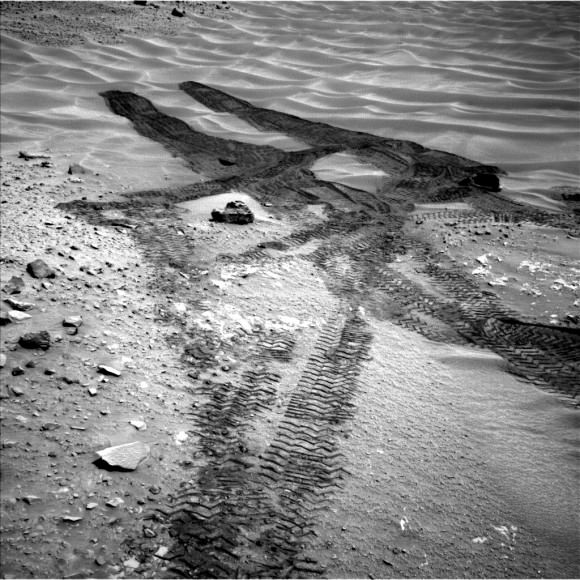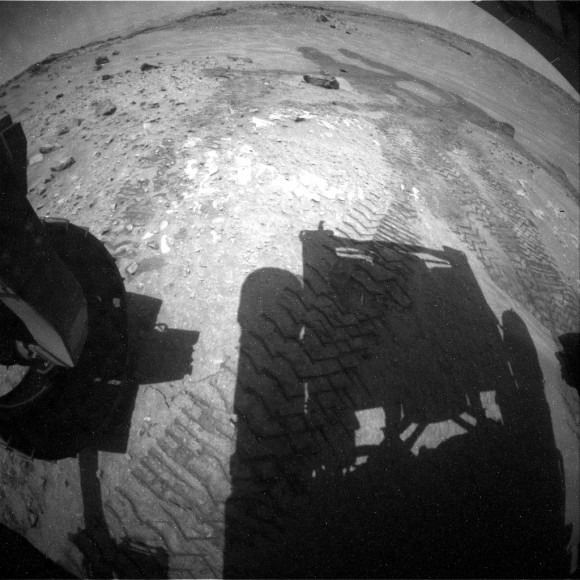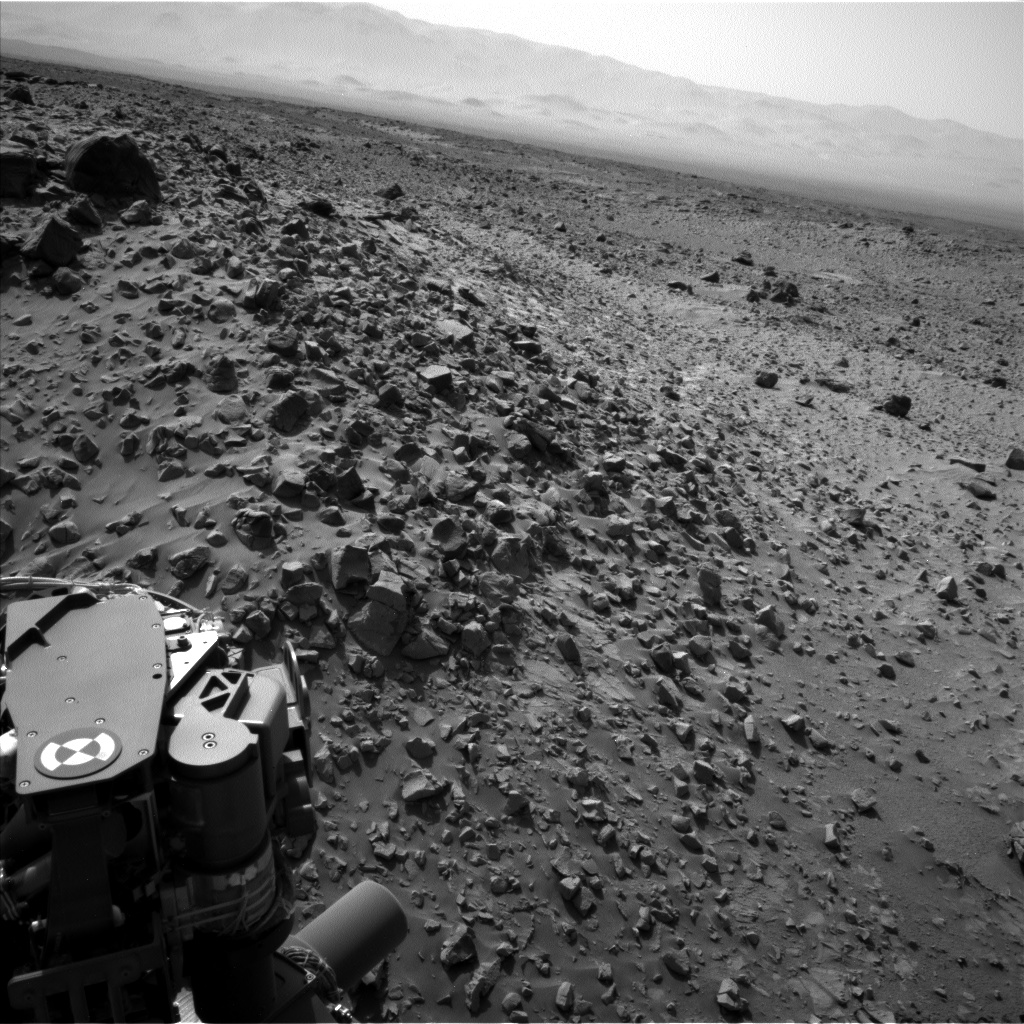This picture alone illustrates the challenge NASA has as it slowly moves the Curiosity rover across Mars to its mountainous destination. You can see rocks surrounding the rover on Sol 713 (on Aug. 8), which is a challenge because of the ongoing wear and tear on Curiosity’s aluminum wheels.
In mid-July, Curiosity crossed one of the most difficult stretches of terrain yet since NASA spotted the damage and took measures to mitigate further problems, which includes picking out the smoothest terrain possible for its rover — which just celebrated two years on the Red Planet.
“For about half of July, the rover team at NASA’s Jet Propulsion Laboratory in Pasadena, California, drove Curiosity across an area of hazardous sharp rocks on Mars called ‘Zabriskie Plateau’,” NASA wrote in a recent press release.

“Damage to Curiosity‘s aluminum wheels from driving across similar terrain last year prompted a change in route, with the plan of skirting such rock-studded terrain wherever feasible. The one-eighth mile (200 meters) across Zabriskie Plateau was one of the longest stretches without a suitable detour on the redesigned route toward the long-term science destination.”
The rover is planning to make its way up the slope of science destinations on Mount Sharp, which is about two miles (3 kilometers) away. NASA pointed out that an interim stop for the rover will take place less than a third of a mile away (500 meters).
“The wheels took some damage getting across Zabriskie Plateau, but it’s less than I expected from the amount of hard, sharp rocks embedded there,” added Jim Erickson, project manager for Curiosity at NASA’s Jet Propulsion Laboratory, in a statement.

“The rover drivers showed that they’re up to the task of getting around the really bad rocks. There will still be rough patches ahead. We didn’t imagine prior to landing that we would see this kind of challenge to the vehicle, but we’re handling it.”
Curiosity has driven out of its landing ellipse and will continue the trek to the mountain, stopping to perform science along the way.
NASA plans to heavily borrow from Curiosity’s design for its next rover, called Mars 2020. The science instruments for that rover were selected last week. While Curiosity was made to seek potentially habitable environments in the past or present, Mars 2020 will have the capability to search for organic materials that could indicate precursors to life.




Weight considerations probably led to aluminum wheels. But given the severity of the Martian environment, it’s surprising a more durable traction material wasn’t anticipated or used.
“We didn’t imagine prior to landing that we would see this kind of challenge to the vehicle, but we’re handling it.” SERIOUSLY!? Apparently someone thought Mars had paved roadways, and never once looked at all the pictures (readily available online) of rock-strewn surfaces. If NASA had started to the mountain when it first landed ( TWO years ago) and not spent months crawling around the base, the wheels might very well be in better shape for the upwards trek. After all, the rocks it spent time staring at will still be there later.
obviously to lose weight on the one hand, for the weight of the instrument was that it was decided that the sheets of the wheels were aluminum, but now we will have to tread carefully as missing to reach buttes murray, because if it is not so how does that would rise slopes without aluminum sheets? .